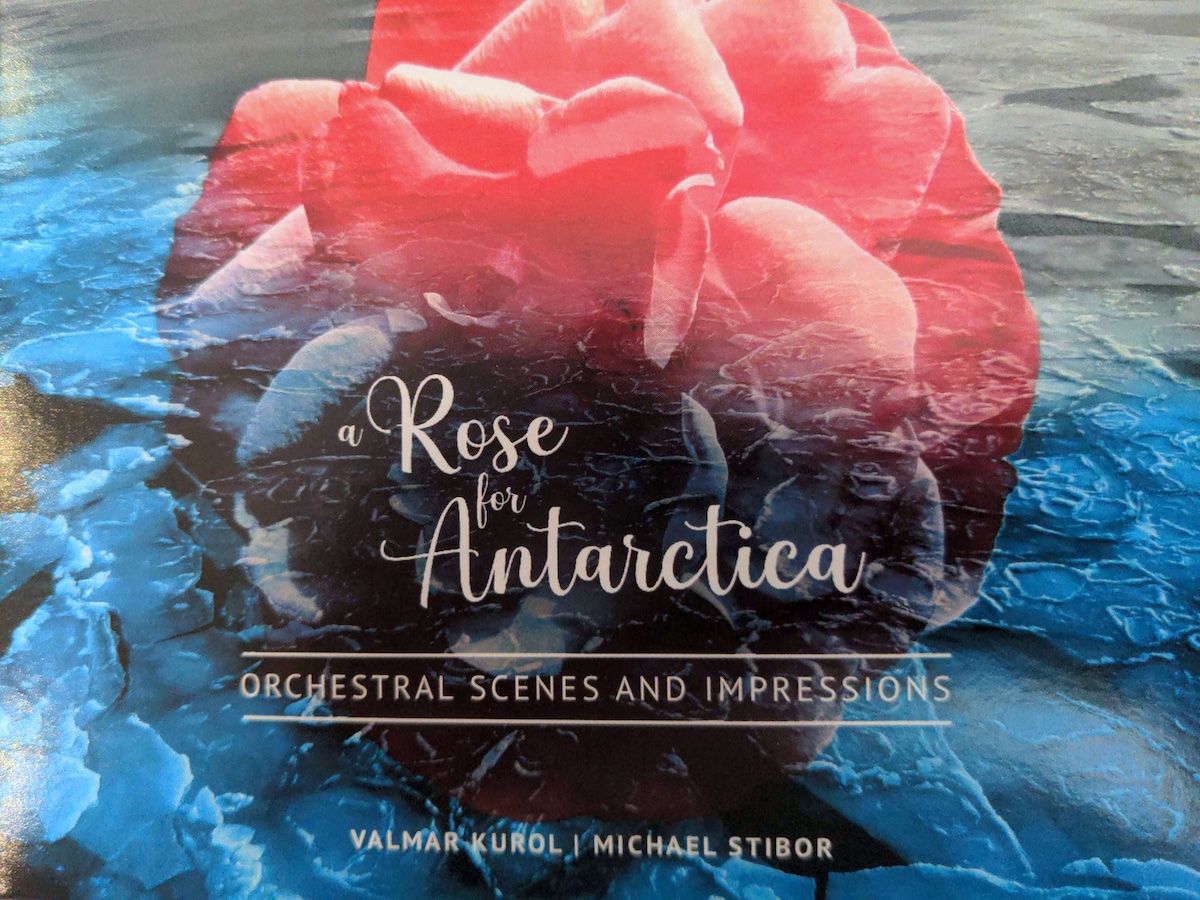Stibor has provided the arrangements and mixing and interprets the music on synthesizer and by programming. Mastered by Richard Addison the recording is of excellent quality, especially heard with top-notch earphones.
As always there is a very informative booklet accompanying the recording. It must also be noted that the cover, the entire packaging is simply gorgeous. Photographs are by Kurol, album graphics by Michael Valcenat. The exploration through music of Antarctica is explained in the album notes. The various themes related to the continent are often self-explanatory by the titles; the extra notes are a wonderful bonus.
These musical projects were spurred by Kurol’s first visit to Antarctica in 1993. He has been there four times since. Which confirms the strong draw, and the desire to put these feelings into music.
The music is divided into four sections. The first is Soaring Over Ice, opening with a splendid fanfare. It ends with, to these ears perhaps the most compelling of the tracks, Vast Antarctica. It celebrates Antarctica’s “unending ice plains and mountains that pierce deep miles of ice”.
Unfortunately, just as with the rest of the world with climate change Antarctica is beleaguered. The point is gently driven home in the second section, Distress, which opens with Lament for the Earth. While certainly not a dirge, the word lament is very appropriate. Kurol’s liner notes point out not only the melting of polar ice, the pollution affecting our oceans but also ”pestilence and contagions”, as well as the “poverty, overpopulation and human greed at the root of most of these troubles”. Perhaps the most moving of all of the selections on the recording.
The third section, Oceans and Ice is reflective, pensive yet sure to lift spirits. Most enjoyable is Anemones Under Ice, which Kurol describes to a T as a “whimsical instrument-based excursion under an ice shelf”. The value of the liner notes in the booklet is hard to over-emphasize, as the reader discovers aspects of the Antarctic biome perhaps not available anywhere else other than specialized, scientific publications.
The CD concludes with a focus on Human Presence on the continent. It boggles the mind that Spanish Galleons were in Antarctica (the title of the first cut in this lovely finale). Almost 400 years ago, in 1603 Gabriel de Castilla, a Spanish explorer, was perhaps the first human to lay eyes on the Antarctic Peninsula.
With the title track, A Rose for Antarctica Kurol and Stibor debunk the perception of the continent as a dangerous and alien environment. The composition is rather a declaration of love, “respect and admiration for the ice.” Another highlight on this recording, which just like a rose opens slowly “and quietly blossoms and blooms”.
This CD has received a lot of play here, deservedly so. It bears mentioning that the CD was featured on November 11th on Estonian Classical music radio, indicating that the cognoscenti in Estonia were also aware of the beauty of this CD. Highly recommended. It can be heard digitally on iTunes, Spotify, Amazon.com and Amazon.ca. Music to warm the cockles of your heart during our cold winter.
Tõnu Naelapea, Toronto




